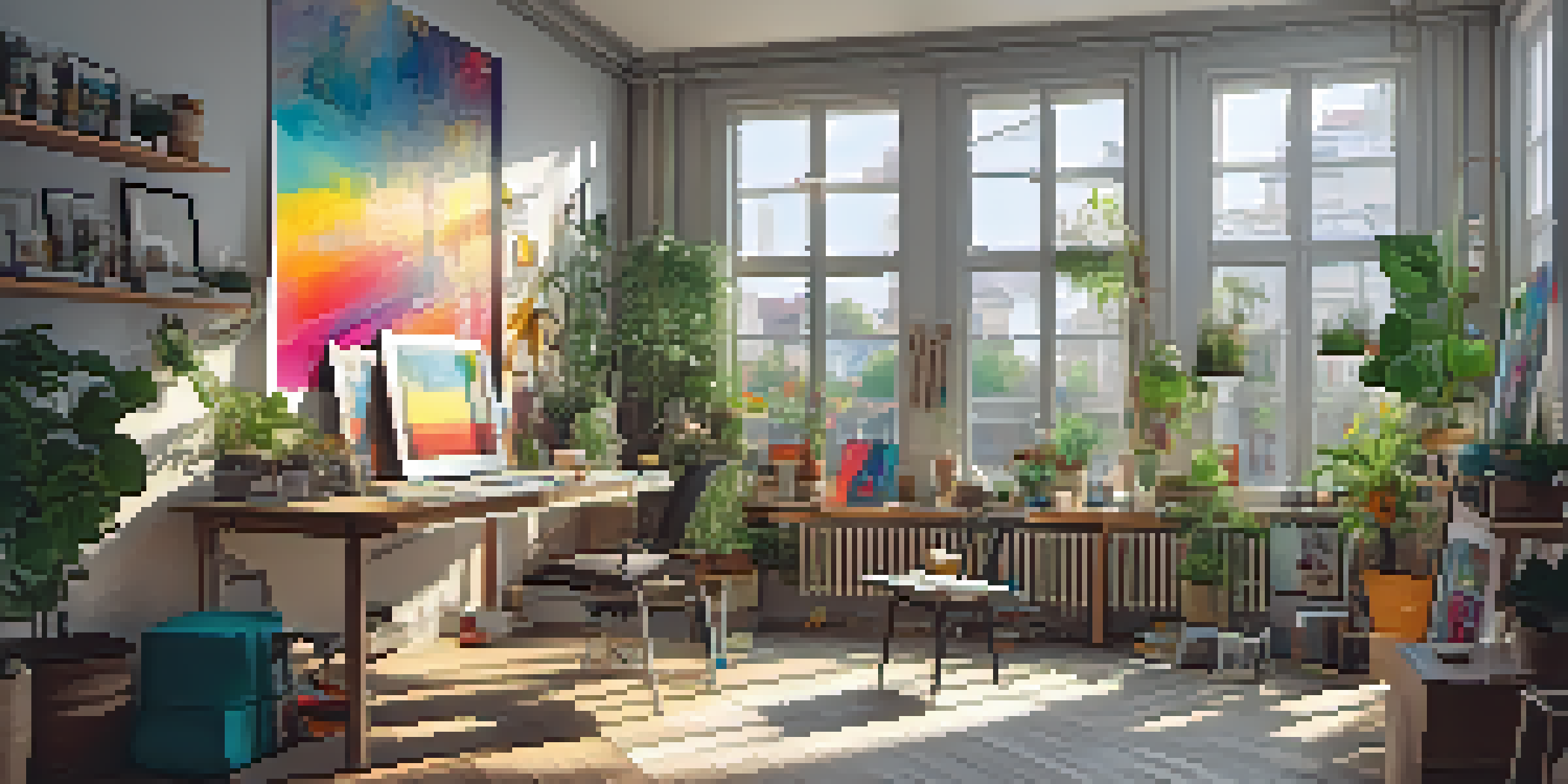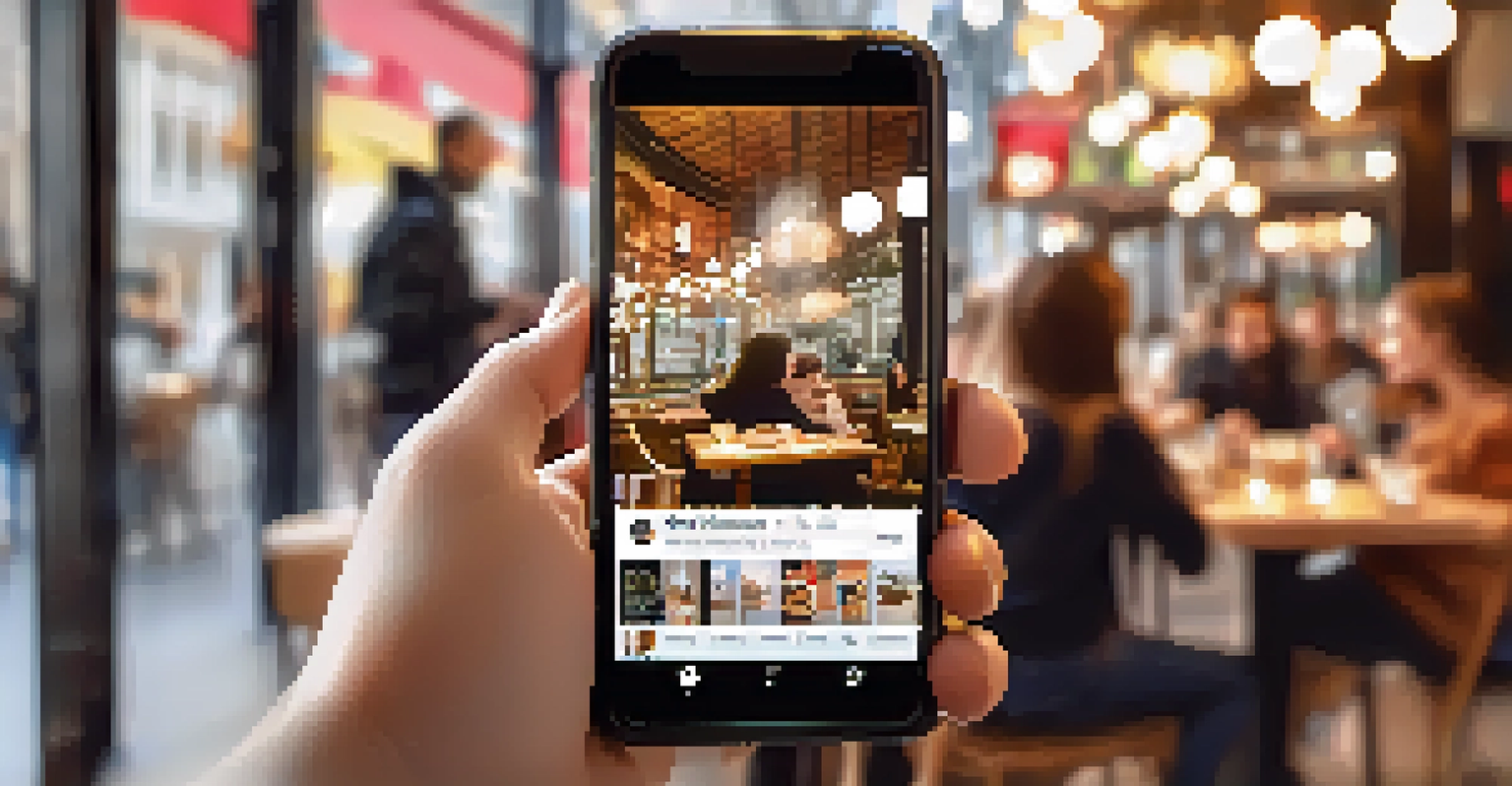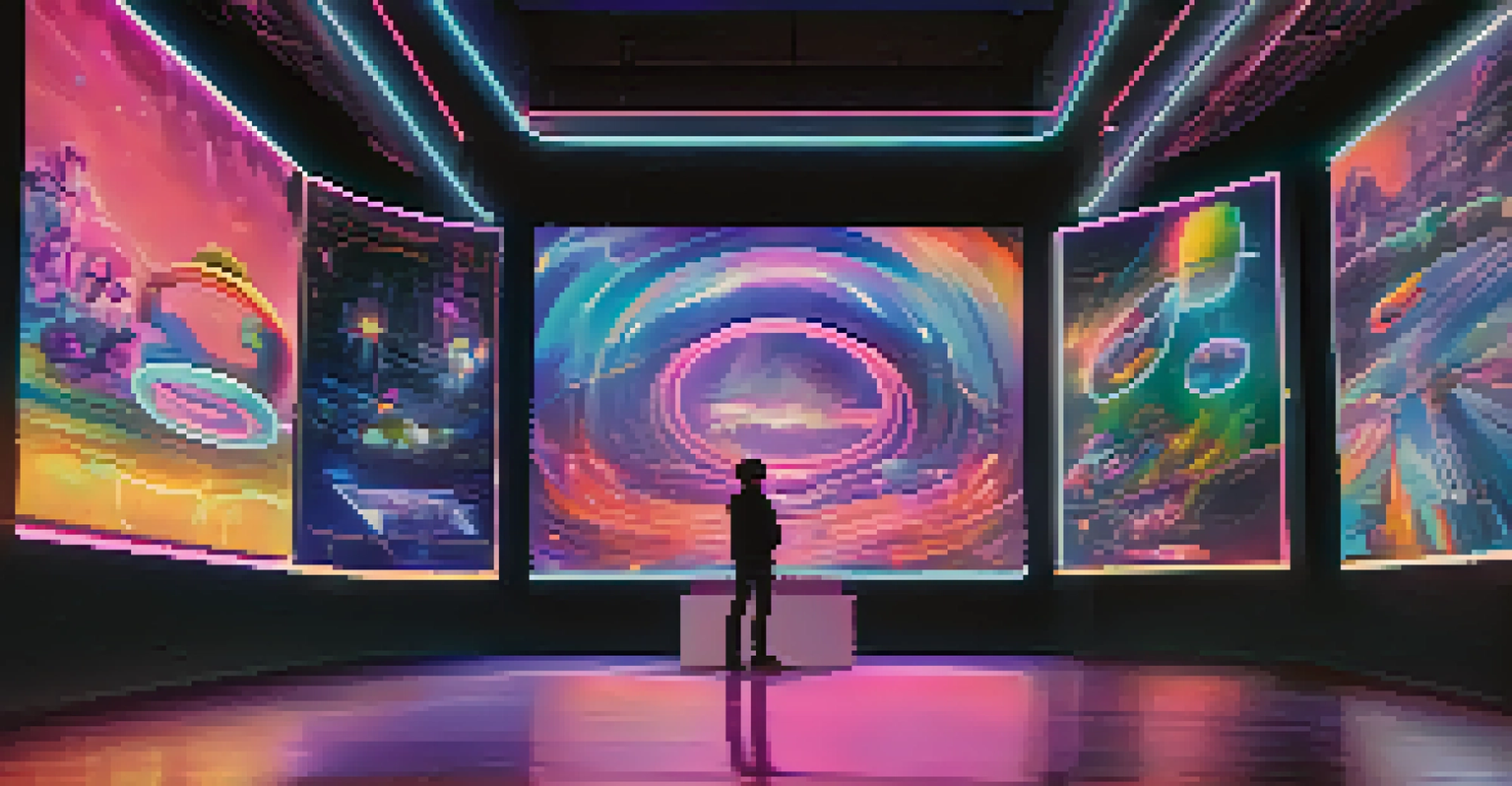The Impact of Social Media on Digital Art Exposure

The Rise of Digital Art in the Social Media Age
In recent years, digital art has surged in popularity, largely thanks to social media platforms. Artists can now showcase their work to a global audience, moving beyond traditional galleries. With just a few clicks, a stunning piece of digital art can go from being seen by a handful of friends to thousands of eyes worldwide.
Art is not what you see, but what you make others see.
Platforms like Instagram, TikTok, and Pinterest have become virtual galleries where creativity knows no bounds. Artists are not only sharing completed works but also offering a glimpse into their creative processes. This transparency helps to foster a deeper connection with audiences, making art more accessible and relatable.
Related Resource
Moreover, the virality of content on social media can propel an artist's career overnight. A single post can attract attention from art collectors, influencers, and fellow artists, opening doors that might have remained closed in the past. The digital art community is thriving, and social media is at its heart.
Connecting Artists with Global Audiences
One of the most significant impacts of social media is the ability for artists to connect with audiences worldwide. Unlike traditional art exhibitions, which are often limited by location, social media breaks down these barriers. An artist in a small town can interact with admirers from different countries, exchanging ideas and inspirations.

This global network allows artists to build communities around their work. They can gain feedback, collaborate, and even participate in virtual exhibitions. The sense of belonging that comes from these connections can be incredibly empowering, encouraging artists to take risks and innovate.
Social Media Boosts Artist Exposure
Digital platforms allow artists to reach global audiences, transforming how they share and sell their work.
Furthermore, followers on social media often become advocates for their favorite artists. When fans share posts or talk about their favorite works, they help create organic buzz. This word-of-mouth marketing can significantly impact an artist’s visibility, leading to new opportunities and collaborations.
The Role of User-Generated Content
User-generated content (UGC) has become a powerful tool for promoting digital art. When fans create their own interpretations or use an artist's work in their content, it builds a sense of community and engagement. This not only showcases the artist's work but also reinforces their brand.
The best way to predict the future is to create it.
For instance, challenges and trends on platforms like TikTok can encourage users to create art based on a theme or style. This participation fosters a collaborative spirit, where artists and fans alike contribute to a larger conversation. It’s a win-win situation that amplifies exposure for all involved.
Related Resource
Moreover, when artists share UGC on their profiles, it creates a cycle of visibility. Fans feel valued and appreciated, which can lead to increased loyalty and support. In this way, social media transforms the relationship between artists and their audiences into a dynamic partnership.
The Impact of Hashtags and Trends
Hashtags are like digital breadcrumbs that lead users to discover new art. By tagging their work with relevant hashtags, artists can reach audiences actively searching for specific styles or themes. This strategy not only increases visibility but also helps artists join trending conversations in the art community.
Participating in trending challenges or themes can also boost exposure. For example, when a specific art style or challenge goes viral, artists can ride that wave by showcasing their interpretations. This not only draws attention but also allows artists to demonstrate their versatility and creativity.
User Engagement Drives Community
User-generated content fosters collaboration and loyalty, creating a vibrant community around digital art.
In essence, hashtags and trends act as tools for navigation in the vast sea of digital content. They help artists position themselves within the broader art dialogue, making it easier for potential fans and collectors to find them. The strategic use of these elements can significantly enhance an artist’s online presence.
Building Personal Brands Through Social Media
Social media empowers artists to build their personal brands in a way that was not possible before. By curating their online presence, artists can define their unique styles and narratives. This branding helps them stand out in a crowded marketplace, making it easier for fans to connect with their work.
Authenticity plays a crucial role in personal branding. When artists share their stories, struggles, and inspirations, they create a relatable persona that audiences can engage with. This authenticity fosters trust, encouraging followers to become loyal advocates for their work.
Related Resource
Moreover, a strong personal brand can lead to various opportunities, from collaborations to sponsorships. As artists cultivate their online identities, they position themselves not just as creators but as influencers within the digital art sphere. This multifaceted approach can significantly enhance their career prospects.
Challenges Artists Face in the Digital Landscape
While social media offers numerous benefits, it also presents challenges for digital artists. The pressure to continuously create and post can lead to burnout, as artists may feel compelled to maintain a constant online presence. This can detract from their creative process and overall well-being.
Additionally, the oversaturation of content can make it difficult for individual artists to stand out. With so many voices vying for attention, artists must find unique ways to showcase their work and engage their audience. This often requires a strategic approach to content creation and marketing.
Challenges of Digital Creativity
Despite the benefits, artists face pressures like burnout and oversaturation, which can impact their creative process.
Finally, navigating the complexities of social media algorithms can be frustrating. Artists may find that their posts do not receive the engagement they hoped for, leading to feelings of inadequacy. Understanding these challenges is crucial for artists to develop resilience and maintain a healthy relationship with their online platforms.
The Future of Digital Art and Social Media
As technology continues to evolve, so too will the relationship between digital art and social media. Emerging technologies like virtual reality (VR) and augmented reality (AR) are set to change the way art is experienced online. These advancements could offer new dimensions of interaction, further enhancing exposure for artists.
Moreover, the rise of decentralized platforms and NFTs (non-fungible tokens) is reshaping the art market. Artists now have the opportunity to sell their work directly to collectors without intermediaries, democratizing the art world. Social media will likely play a pivotal role in promoting and facilitating these transactions.

Ultimately, the future looks bright for digital artists leveraging social media. As platforms adapt and new technologies emerge, artists will have more tools than ever to connect with audiences and showcase their creativity. The journey of digital art exposure is just beginning, and the possibilities are limitless.